Are you searching for best travel books to read that inspire you?
You don’t have to look any further. This article is about 11 books on travel that inspired me.
There are days when I am far away from the mountains, rivers, and winding village paths I so love, yet the urge to travel doesn’t stop.
In those days, books become my road. They let me slip into someone else’s footsteps, feel the dust of trails I haven’t yet walked, and discover new ways of seeing the world.
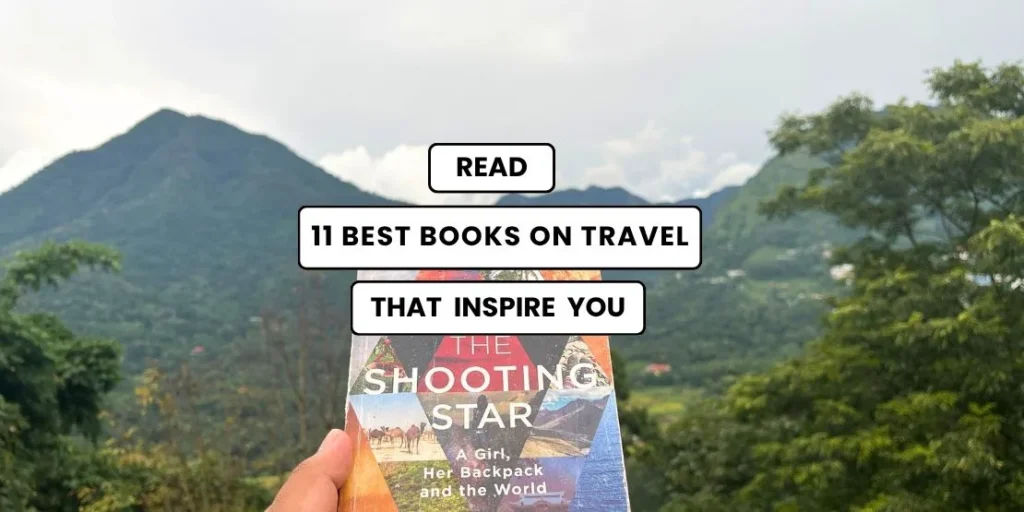
Here are the 11 books that have left a mark on me reminding why I travel, and why I will always continue to –
1. The Shooting Star: A Girl, Her Back and the World
About the Author and the Book:
Shivya Nath, born in Dehradun, left her corporate job with the Singapore Tourism Board at age 23. She sold most of her belongings, gave up her home, and took to full-time travel. She has travelled to over fifty countries.
Shivya is the person behind the famous travel blog: the-shooting-star.com
Inside, she writes of living with a Mayan community in Guatemala, hiking alone in the Andes of Ecuador, being mugged in Costa Rica, crossing borders by swimming, and sleeping under meteor showers in salt deserts in Gujarat.
Her journey from studying in Singapore, eventually working with the Singapore tourism board and then heading out to explore and live full-time travel in a raw, uncertain, and responsible way is inspiring.
The book reminded me that travel is not only about discovering places but about redefining ourselves in each new encounter and supporting the local communities around the world.
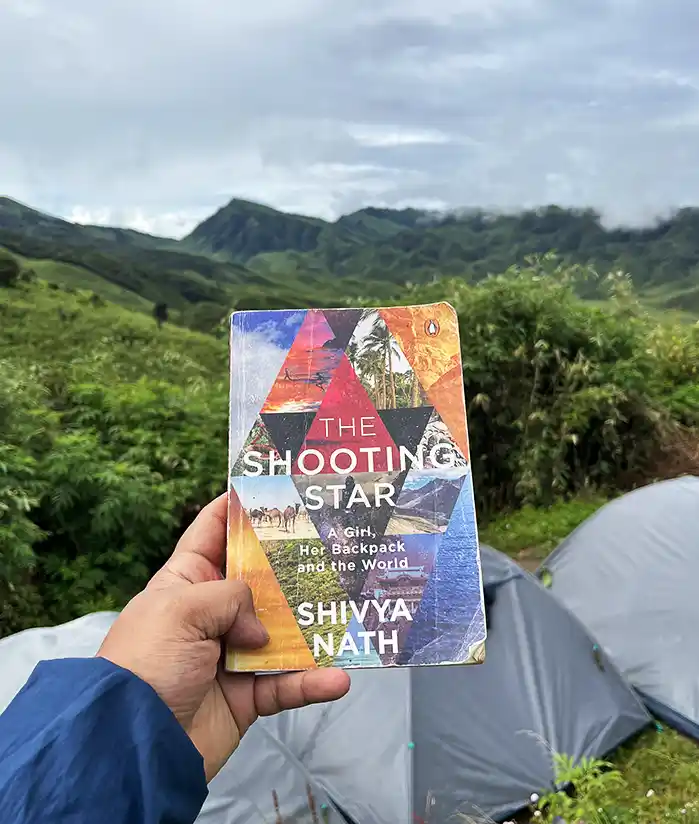
How I relate:
What resonates with me is her willingness to step so far beyond safety: hiking alone at high altitude or sleeping under a desert sky.
In my own journey, I often pause in the village homestays, listening, letting the place unfold its story and Shivya shows how those pauses are the richest parts of travel.
Her choice to live nomadically reminds me that freedom isn’t in having more, but in needing less and being more present.
Shivya’s ‘The Shooting Star’ book is one of the best books about travel.
2. The Goodness of Strangers: Stories of Kindness on the Road Across India
About the Author and the Book:
Shubham Mansingka is from Kullu Valley, India. He runs the travel blog – Travel Shoe Bum and writes on slow travel and remote places.
In Goodness of Strangers, he shares about his encounters with kindness across India from strangers and local communities.
How I relate:
I too have had small but luminous moments – a stranger offering water and tea in remote villages, locals helping us explore new places, inviting us to their home and participate in rituals.
These are the moments that build faith and better understanding on how simple and beautiful life can be.
Mansingka’s work reminds me to watch for human kindness, to stay humble, and to let such moments guide my memories more than the landmarks.
3. Wild: From Lost to Found on the Pacific Crest Trail
About the Author:
Cheryl Strayed published this memoir in 2012. It chronicles her 1,100+ mile trek along the Pacific Crest Trail (PCT) following bereavement and life upheaval.
She faces wilderness, storms, physical pain, and internal reckoning.
How I relate:
I admire how Strayed doesn’t gloss over the hard parts – the blisters, fear, self-doubt.
On some treks I’ve noticed the beauty and the struggle are inseparable.
Reading Wild taught me that being lost (geographically or emotionally) isn’t the end, but often the start of an inner map being redrawn.
4. A Walk In The Woods: The World’s Funniest Travel Writer Takes a Hike
About the Author:
Published in 1998, Bryson hikes with his friend Stephen Katz on the Appalachian Trail.
He writes about nature, trail culture, bugs, days of walking, laziness, laughter. It’s well known for combining humour with travel observations.
How I relate:
I’ve shared many trail meals under tarp or in basic huts where the cold bites and the stars distract you from everything.
Bryson’s humor about misadventures makes me smile, because I recognize the absurdity: when things go wrong, often that’s when your senses are most alive.
The book was also made into a movie.
5. The New Tourist – Waking Up to the Power and Perils of Travel
About the Author and the Book:
Paige McClanahan is an American journalist based in France. Her work has appeared in leading international outlets including The Guardian, The BBC, and The Washington Post.
A lifelong traveler, she has lived abroad since 2008 and brings both curiosity and conscience to every story she tells.
In The New Tourist, Paige McClanahan takes us beyond the postcard image of travel and explores its global footprint – the good, the bad, and the in-between.
She shows how tourism quietly fuels one in ten jobs worldwide and almost a 10th of the global economy, a scale that’s as humbling as it is troubling.
From the volcanic shores of Hawaii to the temples of Angkor Wat and the deserts of Saudi Arabia, she listens to locals, hoteliers, and policymakers, weaving their stories into a thoughtful portrait of how travel reshapes communities.
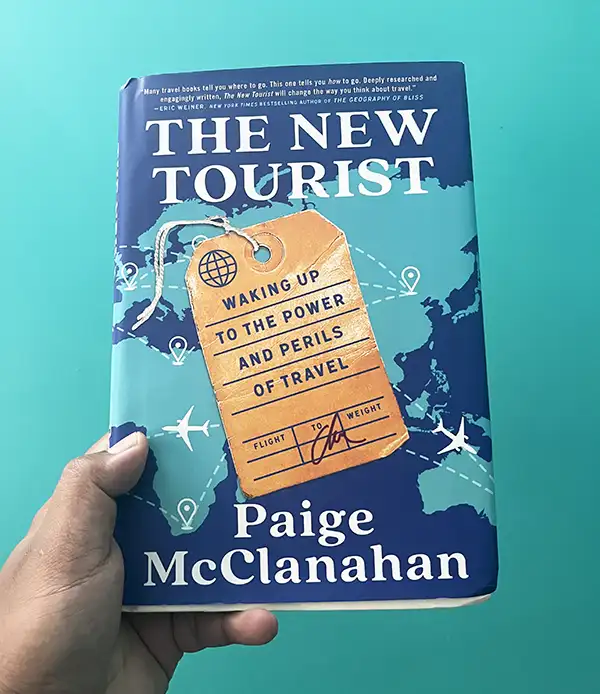
How I relate:
What resonated most with me was her distinction between the “old tourist” – chasing sights and selfies – and the “new tourist,” who travels with empathy and accountability.
In my own journeys through remote mountain villages, I’ve often wondered whether I was contributing or merely consuming. McClanahan’s reflections reminded me to pause and look inward.
This isn’t a guide to destinations – it’s a guide to awareness. A book for anyone who wants their wanderlust to matter.
6. Immersive Arunachal : A Traveller’s Handbook
About the Author and the Book:
Jitaditya Narzary is a travel writer from Assam in the Northeast of India. He runs the travel blog – The Travelling Slacker.
Immersive Arunachal is a traveller’s handbook that Jitaditya and a Monpa local named Sange Tsering published to help you explore different places in Arunachal Pradesh.

How I relate:
I’ve trekked and experience the local culture of Arunachal Pradesh quite a few times. This book gives you a broader insights on how to plan and travel in different tourists circuits and is not just limited to the popular ones.
7. The Wrong Way Round
About the Author and the Book:
Andrew Benfield documents a 6,000 km motorcycle journey starting from India into Nepal, Bhutan, and Burma (Myanmar).
His travel includes unplanned challenges: border formalities, road quality, gear failure, cultural surprises.
How I relate:
Motorcycle journeys are unpredictable, like trekking routes in mountains — one moment you trust the roadmap, next you’re asking locals for directions.
That vulnerability, in mechanical issues or in meeting people outside your comfort zone, always pulls me out of routine.
Benfield’s willingness to take wrong turns (literally and figuratively) mirrors how my best travel stories have arisen when I lost my way.
8. Seven Years of Tibet
About the Author and the Book:
First published in the 1950s, the book is about Heinrich Harrer’s account of his escaping from British internment in India during WWII, journeying across Tibet, becoming tutor to the young Dalai Lama, and witnessing Tibetan life before Chinese occupation.
The book gives detailed descriptions of Tibetan culture, geography, politics in that era.
How I relate:
I often think about home, identity, and history when I travel, especially in places where political change is recent or ongoing.
Harrer’s book taught me that seeing a region is also seeing change – what exists, what was lost, and what persists.
It reminds me to be thankful for the stories elders carry, for landscapes that quietly hold memory.
9. Tuk Tuk to the Road
About the Author and the Book:
Antonia (“Ants”) Bolingbroke-Kent, born in 1978, studied Modern History at Edinburgh. Her friend Jo Huxster was a medical student.
In 2005 they set out from Bangkok to Brighton in a tuk-tuk (nicknamed “Ting Tong”).
How I relate:
I feel a kinship with people who do what seems impossible on paper.
I remember when I planned a long trip thinking friends would call me mad, and yet those journeys gave me some of my strongest stories.
Their willingness to say “yes” to fear, to uncertainty, to breakdowns – that part of travel is what I lean into.
If ever I hesitated, reading this reminds me: often the risk becomes the richest part.
10. Into The Wild
About the Author and the Book:
Jon Krakauer is an American writer and Mountaineer
Published in 1996, Into the Wild is Krakauer’s reconstruction of the life of Christopher McCandless.
McCandless, after graduating, gave away his savings, adopted minimal possessions, hitchhiked across North America, eventually entering the Alaskan wild where he died likely from starvation or accidental poisoning. (spoiler, if you haven’t read the book)
Krakauer draws on McCandless’s letters, journal entries, and interviews with people he met.
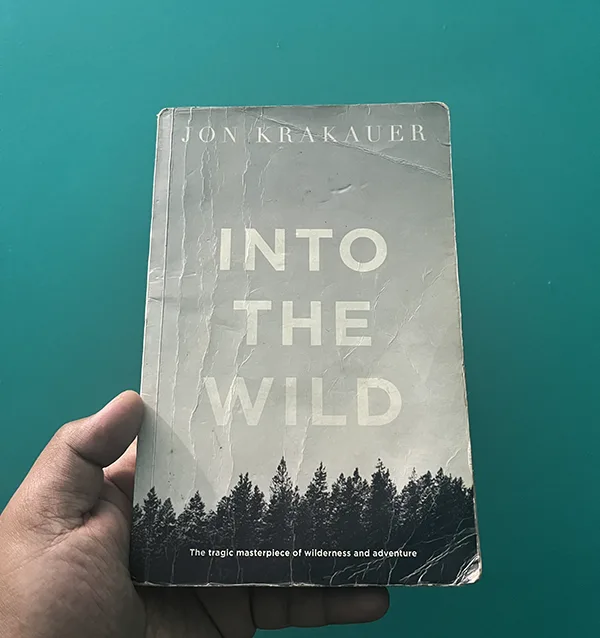
How I relate:
Into the Wild was the first book on travel that I read 8 years ago when I was studying in Pondicherry University, away from home in the southern part of India.
I could relate to the pain, struggles and why he chose his way of travel giving up everything.
I don’t think I want to die in the wild, but I do often look for ways to free myself from expectations what others define as success. To sometimes be free from the stress of responsibilities
McCandless’s story is extreme at many points, but his longing for authenticity is something I recognize – the desire to travel not for show, but for self-truth.
This book reminds me of both the beauty and the danger of idealism, and how travel can expose both.
I believe, you have already been scrolling or downloading reels and sharing quotes from the movie.
You can watch “Into the Wild ” Movie on Amazon Prime Video App .
11. Into Thin Air
About the Author and the Book:
First published in 1997, this is another book written by Jon Krakauer about his personal experience of the 1996 Everest disaster, when an unexpected storm killed several climbers on the mountain during summit attempts.
Krakauer was part of one of the expeditions and writes also of the decisions, pressures, guides, oxygen, timing, and how plans unravelled.
He revisited the tragedy decades later, reflecting on what went wrong and what it meant psychologically and morally.
How I relate:
The Himalayas are places I love and deeply have respect for. Reading ‘Into Thin Air’ sharpened my respect for planning, humility, and the unpredictable power of nature while trekking and climbing.
Being a trained mountaineer myself, this book was an eye-opener about the challenges of mountaineering expeditions.
It made me think how every high altitude trek I do, I should plan not just for success, but for surprises, frost, wind, delayed returns.
It reminds me that what you learn descending is just as important as the climb up.
Summing it Up
These books offer more than beautiful destinations: they share risk, transformation, kindness, failure, and the lives lived between the maps.
I see pieces of my journey in each of them – the moments of doubt, the beauty that arrives unannounced, the people who show up when least expected.
If you read them, I hope they give you courage to walk off the beaten path, wander more slowly, and let the road reshape you.
Which books do you read while traveling?
What are the best travel books to read before your trip according to you? Share in the comments.
I believe, some of you have already read the books I shared above. If not, go for it.
Share this article with your friends too.
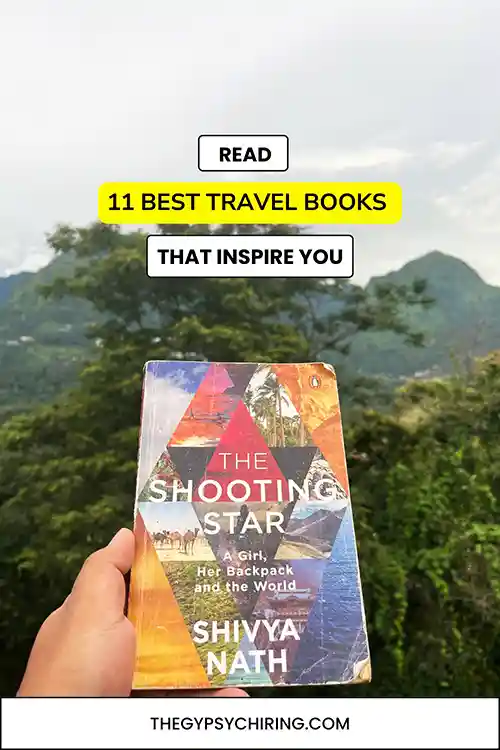
I post review videos of books, travel gears and other products on my “The Gypsy Chiring” Amazon Storefront Page.
Do check them out, you might find something helpful.